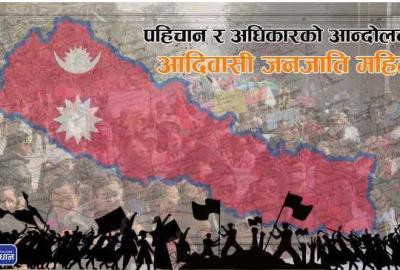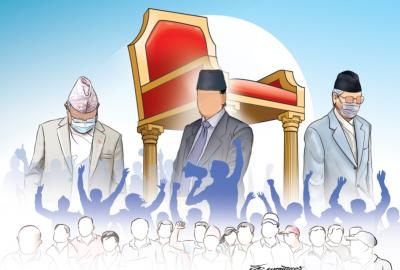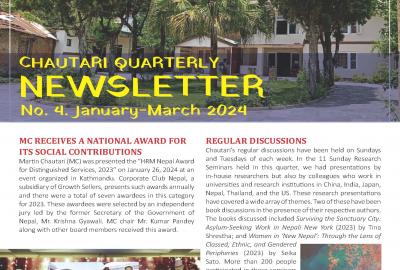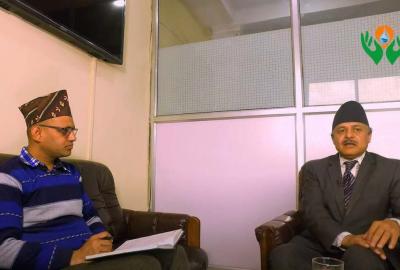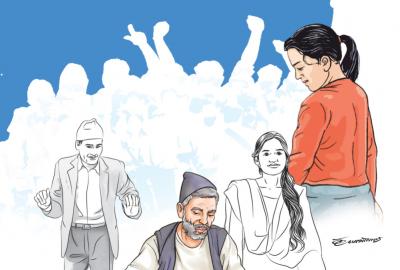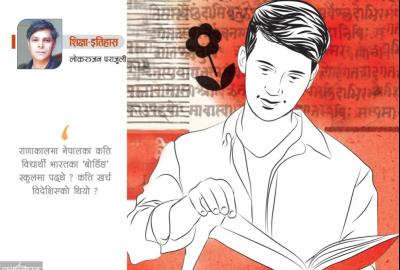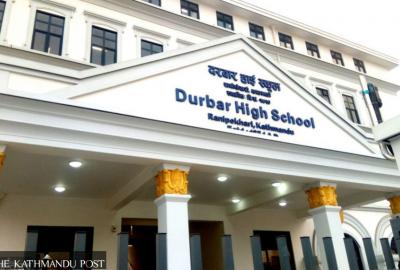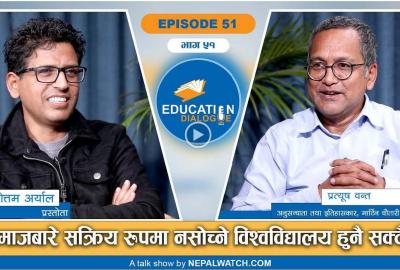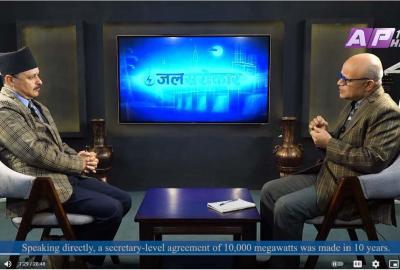Pratyoush Onta
Apr 28, 2018-The earthquake of 25 April 2015 and its aftershocks extensively damaged some of the buildings in the University Campus of Tribhuvan University (TU) in Kirtipur, Kathmandu. The main administrative buildings housing the offices of the top managers of TU, including its Vice Chancellor (VC), were completely ruined. The old building of TU’s Central Library was also wrecked by the quakes. Several other buildings in the University Campus and some buildings of other TU colleges located elsewhere in the affected areas were also damaged. Estimates (as publicly reported in the summer of 2015) of the money needed to repair or replace these buildings ran into several billion rupees.
Amid these depressing reports of damage, there was one piece of news that cheered me up initially. In late May 2015, the then VC of TU, Hirabahadur Maharjan, declared that he would raise money from the graduates of TU to re-build the damaged buildings. To wait for the government to come up with the required money to replace the lost buildings of TU in Kirtipur and elsewhere would result in inordinate delays, he added.
Maharjan’s idea cheered me up for several reasons. First, it was an articulation of hope that was badly needed in those immediate post-quake weeks. Second, the arithmetic behind his idea was stunningly simple. Since TU was the only university in Nepal until the late 1980s, many Nepali households have one or more TU graduates. Even though no one seems to know the exact number, it would be quite reasonable to assume—as did the former VC—that TU has at least one million (ten lakh) graduates. If, on average, each TU graduate contributed only Rs 2,000, TU would end up with a fund of two billion (two arab) rupees that could be used for its re-building. Realistically speaking, not every TU graduate would contribute but many of them would be able to donate a lot more than NRs 2,000. Say, many of the not-so-rich graduates could contribute Rs 5,000. The moderately rich graduates could easily contribute Rs 20,000. And thousands of the quite rich among TU’s graduates that have made it big in various walks of life could easily contribute Rs 200,000 or even Rs 2,000,000. Putting together these potential contributions of varying size could end up in a pot of money that could be much larger than two billion rupees.
Third, although the re-building needs of TU after the quake-induced damages were specific to our 2015 context, the idea of involving the university’s graduates in fund raising has been in operation around the world for quite a while. For instance, in the context of American universities, this idea has been in function since at least the 1890s. In the most recent decades, university graduates who have made tons of money (the “dollar millionaires”) in the corporate world have made significant donations to support the American universities they attended. Every university in the US that I have been fortunate to attend as a student, or visit as a researcher, has benefited from such big donations. But these universities do not rely only on their very rich alumni. They also count on receiving a continuous stream of small donations from thousands of their graduates who provide just a few dollars every year. Such small donations from former students support universities to carry on with their main mission, namely, the daily work of training a new generation of thinkers, professionals and researchers.
There was a fourth reason as well. Philanthropic work with small donations has been a long-standing tradition in our country. Many institutions have benefited from this mode of Nepali charity. Think about all the marble slabs you have seen in various parts of our country with the names of donors who have contributed to temple restorations. Or the news you have read of folks who have contributed small amounts to construct a school building. When the news of Maharjan’s idea became public, I told myself that this Nepali tradition of small giving now needs to happen on behalf of our universities.
I thought, if Maharjan’s idea were to succeed, it could potentially change TU’s future in a dramatic way by addressing a governance challenge it has not been able to address otherwise. The involvement of the members of the alumni—the one group with a permanent interest in the future of the university they have attended—in university governance, partly through engagement as leading members of the Board of Trustees is a social invention that has worked for many of the leading American universities. Successful post quake re-building through the direct involvement of its graduates could lead TU in this direction or so I thought momentarily.
By the early summer of 2015, Maharjan had started consulting with some of the star graduates of TU, especially young and influential politicians in the major parties. He also consulted with at least one former VC about this idea. To provide further credibility to his efforts, he also declared that the employees of TU would make compulsory contributions to the same “repair” funds (the magnitude of these contributions was scaled down from those initially proposed). However, as the months passed, Maharjan’s effort to raise big money from TU graduates did not materialise.
The fact that there was not an already functional alumni organization of TU graduates became the first hurdle. There was a further confusion regarding exactly how such an organisation ought to be established. Should separate chapters of an alumni organisation for TU’s 60 constituent colleges and hundreds of affiliated colleges be established first (some of these reportedly exist) or should an overarching alumni organisation be established and open its membership to all graduates who can provide proof of a TU degree? Discussions to solve this conundrum reportedly ate away several months after the April-May 2015 quakes.
Second, the appeal by the then VC also had to contend with the credibility deficit from which TU suffers in the popular imagination. Many individuals in Nepal, including some who are in very influential positions, think of TU as an academically defunct organisation or one whose resuscitation is virtually impossible (I don’t agree with this view). Hence, while Maharjan’s call was full of hope, the institution on whose behalf he made the appeal could not validate that hope.Third, the fact that TU is a “public” university supported by the state must have played some role in this failure. As a sarkari institution, many could have felt that it was the central government’s responsibility to do the re-building of TU and in the world of this logic, TU’s graduates could not hence play a leading role in the process.
Finally, all big dreams need institutional organisation to back them up. The American universities that count on getting big or small donations from their alumni have, over the decades, built dedicated offices with full-time staff whose sole responsibility is to reach out to their alumni and solicit contributions. They used to do this via snail mail and the phone in the old days. Now they also use all kinds of smart technology to continuously remain in contact with their alumni (potential) donors.
In Nepal, we like to talk big and provide no appropriate organisational mechanism to support our big talk. TU’s inability to innovate such an institutional mechanism, even if the making of the alumni organisation per se was going to be delayed, was the final nail that killed the hope-producing idea.
In the meantime, an alumni organisation has been started recently. Some replacement buildings have come up in Kirtipur to house the leading managers of TU. But the possibility of TU’s re-building in its extended sense that had momentarily cheered me up in the summer of 2015 remains unrealised.
The author tweets @pratyoushonta
Source: http://kathmandupost.ekantipur.com/news/2018-04-28/failed-student-led-rebuilding-of-tu.html
